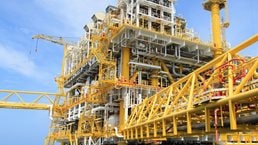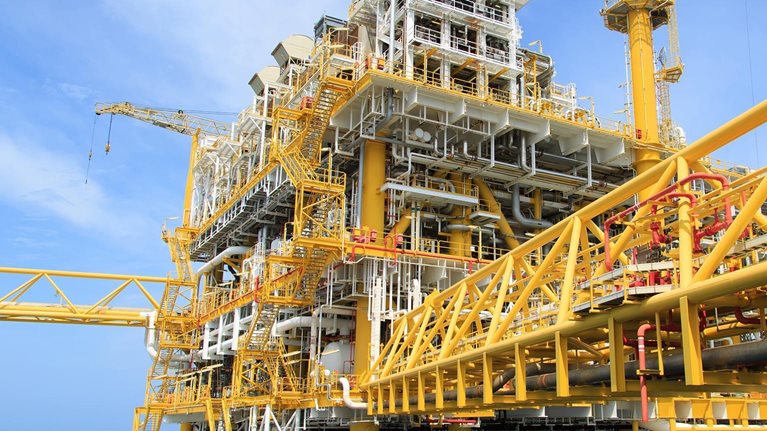Major societal, technological, and political trends are redrawing the backdrop against which oil and gas companies operate. Combined with the “lower for longer” oil price environment, which most players now expect, these changes are having a profound impact on what it takes for oil and gas companies to be successful. There have been immediate shifts in how companies think about their portfolios, how they deliver capital projects, and how they operate. But this is not enough. Oil and gas leaders must also make changes to address the health of their organization—its culture, capabilities, and management practices—if they are to be successful in this new world.
Stay current on your favorite topics
Organizational health matters
Across industries, including oil and gas, healthy organizations perform better. According to our analysis, healthy oil and gas companies deliver twice the level of total returns to shareholders compared with those that are not healthy.1 When looking closer, inside an individual oil and gas company, our research shows that healthier performance units have higher productivity, as well as stronger safety performance (see exhibit). In healthy companies, employees know where the organization is headed; understand how they fit into the strategy to get there; have the tools, capabilities, and motivation to execute; and are empowered to innovate and change. Oil and gas companies that are able to pinpoint gaps and improve the health of their organizations have the potential to outperform.

Three hallmarks of organizational health
Our research has identified three hallmarks of healthy oil and gas companies as the ability to:
- Ramp-up innovation alongside operational discipline
- Flex the operating model and empower the frontline leadership
- Attract, motivate, retain, and develop the next generation
Leaders that manage to develop these hallmarks in their organizations will position their companies for success.
1. Ramp-up innovation alongside operational discipline
There is a constant tension in any company between creating the right level of operational discipline and a work environment that provides latitude for innovation. In the past, oil and gas companies have typically emphasized standards, compliance, and risk management. But it has often been done in a way that left little room for bottom-up innovation, and in many cases, the vast potential for improvement that sits with frontline employees and lower-level leaders was missed.
Data from our Organization Health Index (OHI) shows that the oil and gas industry as a whole ranks a long way below others when it comes to fostering innovation. Innovation outcomes are three points below the cross-industry benchmark, and oil and gas companies are 5 points below benchmark in key innovation practices: ideas are not coming up from the front line, nor are senior leaders creating the space or expectation for innovation.
A singular emphasis on operational discipline worked in a world where value was created through a few “big bets” early in the resource life cycle combined with execution, which was “good enough.” However, the world has changed. As the energy industry moves into a period of low oil prices and resource abundance, this innovation gap will degrade companies’ ability to react rapidly in response to sudden changes.
Oil and gas leaders will need to balance discipline and innovation more successfully. Unconventionals, for example, now make up more than 10 percent of the daily production of major international oil companies (IOC)2 , and over the last decade, late-life asset decommissioning costs have risen ~30 percent per annum. 3 To take advantage of new opportunities created by technology, and to meet new cost challenges, oil and gas companies need to build innovation into their operational cultures and find ways to identify, encourage, and embrace ideas from multiple sources.
Would you like to learn more about our Oil & Gas Practice?
The most successful oil and gas companies are learning to combine innovation and operational discipline, and some are starting to use agile organizational practices to embed and accelerate these practices even further. For example, one European operator has begun to re-organize its maintenance teams on site around equipment ownership rather than trades. Multidisciplinary self-managed teams, or “squads,” are organized around key equipment—eg, compression, separators, and pipelines. Chapters of common skill pools across squads drive best practices and operational discipline, ensuring those with specialized functional or trade skills operate within an accepted set of standards while squads themselves have significant freedom to innovate in pursuit of their clear objectives on equipment availability, safety, and cost performance. Such emerging operating models help break down silos and enable more real time sharing of information across the organization.
Away from the frontline, another oil company has created significant flexibility for its R&D engineers—for instance, providing freedom to set their own working hours and location—and encouraging rapid prototyping of concepts to prove them instead of following the same approval process required for other business ideas. In this environment, one engineer created a new subsea concept that cut development and operating costs by up to 30 percent.
Finding ways to create global standards and disciplined execution, while also allowing empowered cross-functional teams the freedom to innovate and move fast, is now becoming an imperative for healthy, high-performing oil and gas companies.
2. Flex the operating model and empower the front line to win across multiple basins
Over the past decade, most oil companies converged on a matrix organization structure of some kind, combining region or asset-based organizations with input and support from strong central functions. Companies sought to reap the benefits of scale by applying a similar approach—or operating model—across basins. While a one-size-fits-all operating model can deliver good performance across basins, it usually fails to deliver the flexibility to be the best in any individual basin. In a world of tighter margins and increased competition, oil and gas companies need to adopt a different approach.
To be the most competitive in multiple basins requires that companies flex their operating models and empower the front line by pushing decisions and ownership down to the assets. For example, success in unconventionals requires local empowerment to make rapid decisions close to the workfront and pursue continual cost and performance improvements through local innovation and local relationships. This is most successful when the local teams are both empowered to make these local decisions, but also have high levels of personal ownership for the results and strong financial management practices in place.
Central functions then are focused on building a pool of skills, tools, and capabilities, which local basins pull in and adapt as needed. Global functions operating in this way would spend far less time and resources pushing out mandates, which the local teams must implement. So long as local teams operate within certain predefined guard rails, they would have the authority to direct deployed functional resources and tools in a way that is optimal for their particular challenges and opportunities.
Empowerment should not be confined to the assets. One oil and gas company has made all well data freely available to engineers across the company on an internal platform created to ‘crowdsource’ ideas for well interventions. Engaging the global community far beyond the central teams is particularly motivating for younger engineers in the assets, where even graduates can contribute suggestions for the company’s mega fields. It is also translating into performance gains: innovative ideas suggested have enabled the company to significantly arrest the natural decline rate of their fields.
The role of the leader will be fundamentally different, moving from directing to empowering. Leaders must unleash local teams to find innovative ways to maximize production and reduce costs. For many companies this shift will require a fundamental change from their leaders, yet the prize is large.
3. Attract, motivate, retain, and develop the next generation of employees
The capabilities required to win in oil and gas are changing profoundly. Advanced analytics, remote monitoring, and rapidly evolving digital solutions require a fundamentally different set of capabilities, while demand for many traditional roles will reduce or disappear. In the future, oil and gas companies will be directly competing with technology companies for talent. The industry will require skill to navigate these shifts, but the OHI results show this is not an area of strength today. Oil and gas companies are a long way below benchmark in the practices associated with talent development and talent acquisition. At an industry level, these two practices show the largest gaps to the cross-industry median score.
Successful oil and gas companies already have begun addressing this issue. For example, once one oil and gas company sets its capital spend, it identifies the capabilities required to deliver in each business area. Then the need is compared to the internal talent pool available over the period of the capital plan. Where there are gaps, the company makes a data-based decision—using a digital workforce platform that employs advanced analytics to match job needs to available talent—whether to hire, train, or go external.

Rethinking oil and gas organization
A healthy workplace is increasingly critical for companies competing for millennial talent that prioritizes satisfaction and meaningfulness in their careers. Millennials will make up more than 50 percent of the developed world’s workforce by the early 2020s and, currently, they do not see the oil and gas industry as attractive. Indeed, 14 percent of millennials said they would not consider working for oil and gas companies—a higher percentage than for any other industry. Leaders will have to work hard to combat this negative perception and create a culture that attracts this new generation of talent.
The OHI survey shows that healthy oil and gas companies emphasize the practices of “role clarity,” “meaningful values,” and “personal ownership” and also emphasize “accountability” as an outcome. Clear roles and a sense of ownership allow employees to understand and buy into the mission and values of the company, and encourage them to want to help it achieve better performance. The traditional model of four to five years in each role and 10 years before real decision making authority also needs to change. Career paths must be redesigned to compete with the tech companies, by giving more accountability to young engineers earlier in their career. The OHI score gap between healthy and unhealthy oil and gas companies in implementing these practices is among the widest. It is critical that leaders build a healthy organization to secure their pipeline of talent for the future.
How can I improve my company’s health and performance?
Putting the three hallmarks of healthy oil and gas companies in place requires a transformation of the organization; but this does not mean extra upheaval in the form of launching yet another organization-wide change initiative. These healthy practices are all about behavioral tendencies and can be applied as an element of the “how” for almost any big change or transformation. McKinsey research shows that most companies, these days, are already in a nearly permanent state of organizational flux.4 Instead of rolling out a new competing set of initiatives around organizational health, double down on existing improvement programs and change initiatives by embedding these healthy behaviors into the “how” of the things already underway.
Including a heavy dose of change management to reinforce the desired healthy practices will not only improve the health of the organization; it also boosts employee engagement, and significantly enhances the financial and operational impact of the business initiatives to which it is applied. As an added benefit, a natural reinforcement is created as people experience firsthand that these behaviors are effective in helping to accelerate and improve the effectiveness of existing transformation efforts. Plus, they deliver in the course of the work the organization is already doing, making change faster and easier, rather than a series of extra work piled on top of an already full plate.
For example, if a cost-reduction effort is being driven at an asset level, then leverage that opportunity to encourage more frontline innovation. Instead of 5 big ideas driven by the management team, look for 500 ideas from all levels of the organization, including the front line. Build in the right infrastructure to evaluate ideas against a sound business rationale, that operational risk and downside is mitigated, and the full set of ideas is tracked and monitored on a weekly basis. Of course, this comes with the added benefit of building in continuous improvement and problem-solving skills at the front line that will continue to generate value.
Not all organizations are the same, each will have its unique strengths and opportunities. To understand the specific improvements required in any given organization, it is important to build a fact base on the current state. Conducting the OHI enables companies to create a fingerprint of the health of their organizations. Based on the gaps or opportunities highlighted through the OHI, they can then create targeted interventions to improve organizational health. For the healthiest, most successful companies this is not a one-time exercise: the best set targets for improvement, and measure their progress regularly, adjusting as the industry—and the global environment—changes.
As the oil and gas industry navigates a new normal characterized by greater uncertainty and volatility, it is critical that leaders make sure their organizations are healthy and fit for the future.

